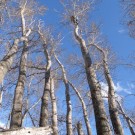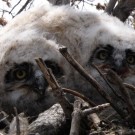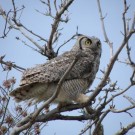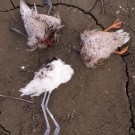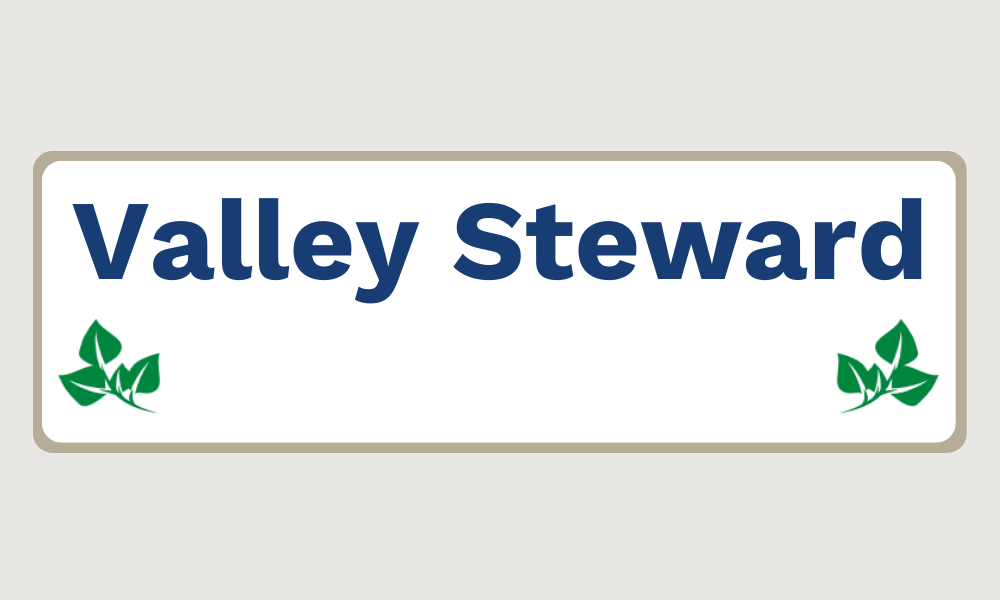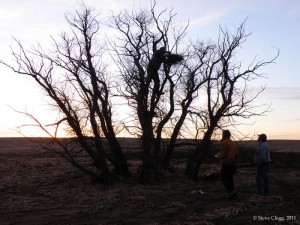 Steve Clegg: Out and About
Steve Clegg: Out and About
Our Environmental Stewardship Coordinator, Steve Clegg, recently went on vacation. Not to Mexico, nor to Vegas, instead Steve traveled to the center of the Canadian Prairies to trudge through “gumbo”, wade through swamps, and climb sketchy dead trees, all while living out of the back of a car for a week. Why, you may ask? To band Great Horned Owls of course.
Bird banding is an important tool used in the scientific study and monitoring of wild birds. A uniquely numbered metal band placed around the leg of an owl allows is to be tracked throughout its life time. This also helps to monitor owl populations, determine common causes of death, and assess the effects of environmental contaminants.
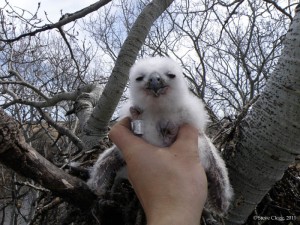 Much of today’s banding data contributes to North America-wide monitoring, research, and conservation programs as well as improving our understanding of bird movement world wide.
Much of today’s banding data contributes to North America-wide monitoring, research, and conservation programs as well as improving our understanding of bird movement world wide.
Steve and the rest of the banding crew are alerted to nest locations by local farmers, naturalists and even pilots that spot nests from the air. The banding crew tracks down each nest with a GPS then selects a suitable climber to ascend the tree. After strapping on climbing spurs and a harness,
Steve decks himself out with makeshift safety gear as the adult Great Horned Owls are known to be aggressive and often strike the climber.
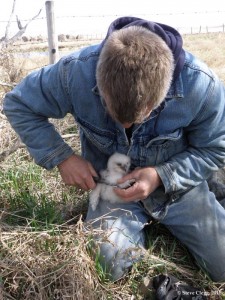 Donning a hockey helmet with a full visor and a heavy leather welding jacket, Steve begins to shimmy up the half-rotten poplar tree. 45 feet up, he wraps his lanyard around the tree, leans back and peers overtop of the nest.
Donning a hockey helmet with a full visor and a heavy leather welding jacket, Steve begins to shimmy up the half-rotten poplar tree. 45 feet up, he wraps his lanyard around the tree, leans back and peers overtop of the nest.
Three baby Great Horned Owls glare back at him less than 12 inches away while hissing, clacking their beak, and striking out with their talons. Halfway through attaching the numbered aluminum band to the first baby’s leg the spotters below yell “Incoming!” as the mother owl swoops silently towards Steve’s head with talons fully extended. Ducking down and griping tightly to a couple dead branches, he braces for impact. The mother owl nails the back of his helmet with enough force to feel like being walloped with a full four-litter milk jug then she lands on a branch four feet away and joins in with her chicks hissing and clacking. After finishing the third band, he assesses the nest condition and its contents then relays the data down to the note taker, “It’s a solid nest…… with one headless Mallard, one…..no….two field mice, and the south end of a rabbit.”
Back in the car, the crew stocks up on critical banding food consisting of nacho chips and ice cream while rattling down rutted gravel roads in search of the next nest.
